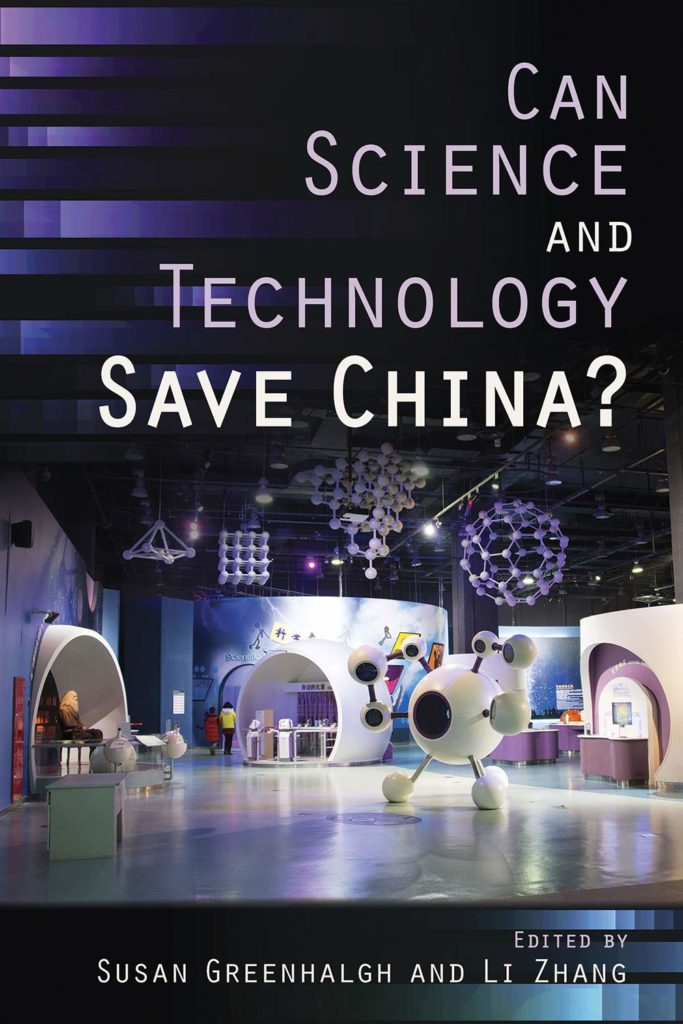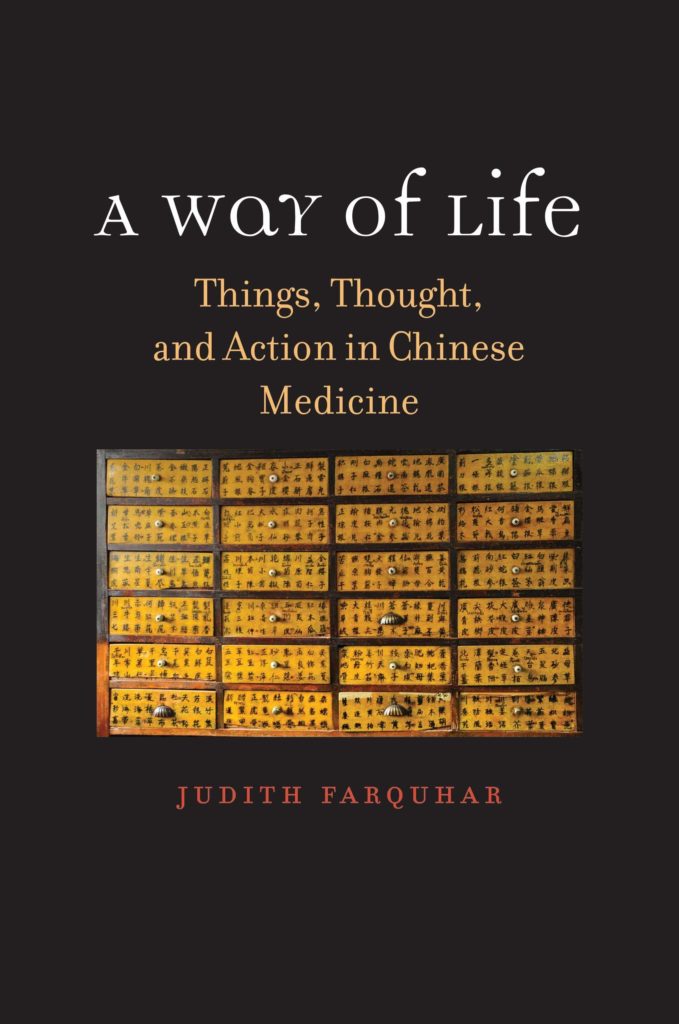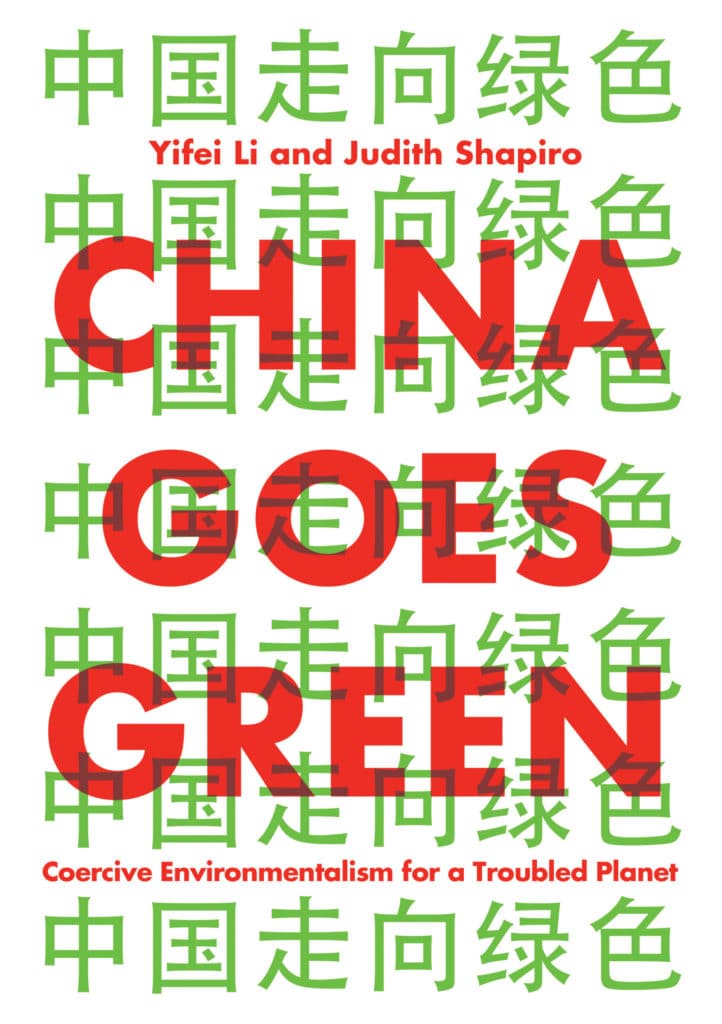China as Mirror
Review of
Can Science and Technology Save China?
Ithaca, NY: Cornell University Press, 2020, 226 pp.
A Way of Life: Things, Thought, and Action in Chinese Medicine
New Haven, CT: Yale University Press, 2020, 184 pp.
China Goes Green: Coercive Environmentalism for a Troubled Planet
Cambridge, MA: Polity, 2020, 240 pp.
For two centuries Americans have been debating whether they ought to be teaching or learning from China.
Ralph Waldo Emerson in his twenties laughed at the idea of learning from China. Yet decades later, at a welcoming banquet for China’s new ambassador to the United States, he expressed gratitude for the establishment of relations between “the oldest Empire in the world to the youngest Republic.” He went on to say: “The immigrants from Asia come in crowds. Their power of continuous labor, their versatility in adapting themselves to new conditions, their stoical economy, are unlooked-for virtues. They send back to their friends, in China, money, new products of art, new tools, machinery, new foods, etc., and are thus establishing a commerce without limit.” The immigrant example, in this view, perhaps offered something Americans could emulate.
Now, 160 years later, it has become common for Americans to demonize China as a dragon of economic and viral infections that needs to be taught a lesson. The contemporary American love-hate relationship with China is thrown into new relief when it comes to science and technology. China sends thousands of science and engineering students to study in the United States, while hundreds of social scientists trek to China to study it. There are mirror images in the history of China’s own love-hate relationship with America, beginning with what must have been the combination of honor and insult felt by the Qing Dynasty ambassador at Emerson’s patronizing compliments.
“Can science and technology save China?” ask Susan Greenhalgh and Li Zhang in a collection of eight articles by social anthropologists examining various facets of health care and public health in contemporary China. It is a question even more fraught in the wake of the coronavirus pandemic, and the global pathways that the pandemic reveals and exploits. But Greenhalgh’s introduction and the medical anthropologist Mei Zhan’s afterword barely hint at the deeply conflicted history of modern Chinese attraction to Western science and technology as a means to national salvation, an attraction that reaches back to Emerson’s time, with the “Self-Strengthening Movement” that emerged in China after the humiliating Opium Wars of the mid-nineteenth century.
What originated as a dual effort to preserve “Chinese learning as substance, Western learning for application”—the idea that China could advance using Western technology (particularly military technologies) while retaining its Confucian cultural traditions—has in the post-Mao era been turned around. As the contemporary philosopher Li Zehou puts it, “Western learning as substance, Chinese learning for application,” implying that Western science and technology, or S&T, is now the foundation for the viability of any culture. In Greenhalgh’s words, “Post-Mao China [is] home to a veritable state-sponsored religion of S&T marked by widespread faith in the power of modern science and technology to solve the problems that other approaches have failed to solve.” This “mass culture of S&T” has been threatened by such problems as “contaminated food and toxic air”—and now, of course, the novel coronavirus.
China sends thousands of science and engineering students to study in the United States, while hundreds of social scientists trek to China to study it.
In his speech at the 19th National Congress of the Communist Party of China, in October 2017, Chairman Xi Jinping nevertheless doubled down on the country’s investment in S&T and called for China to become a world leader in artificial intelligence innovation by 2030. In the 2010s, according to Greenhalgh, “modern sciences and technologies are being summoned to rescue China not from the depredations of an imperial West or from the blunders of Mao’s collectivism, but from the fallout of post-1978 party policies that have prioritized economic growth above all else.” What Greenhalgh fails to note is the extent to which the United States has exhibited similar commitments and strategies.
In this larger context Can Science and Technology Save China? addresses the titular question through a series of small-scale studies on contemporary aspects of health care. Two persistent themes that run through these essays are “to discover how different China might look when science and technology are given their due” and “to provide scholars in science and technology studies” with better accounts of “Chinese S&T.” In the end, Chinese scholars may have unrealistic expectations about what S&T can do or really does. As the country comes to terms with the interrelations among science, technology, and society, China could well learn something from American experience with these complex relationships—and the limitations of S&T in addressing societal problems.
Take, for example, the lead contribution by Zhiying Ma on a Chinese effort to extend hospital treatments of mental illness into a public mental health infrastructure. Overreliance on quantification can, she concludes, “exert quota-like pressure on practitioners, subject them to impossible tasks and blame, outrun other aspects of the program, unhinge service from surveillance, and exclude certain groups from communities.” The biases and limitations of quantification are well-established features of English-language social science criticism.
This “mass culture of S&T” has been threatened by such problems as “contaminated food and toxic air”—and now, of course, the novel coronavirus.
A later essay, Elizabeth Lord’s examination of environmental research in China and the privileging of urban over rural issues, provides another case in point. As she writes, “China’s green dream [the country’s environmental initiative] researches the population unevenly and builds on inequalities to realize itself.” This has been a theme of the environmental justice movement in West since the 1980s. Another contribution by Matthew Kohrman describes domestic discord over the use of air purifiers in Chinese cities, thus revealing a Chinese case of what feminist scholars call gendered materiality: the example cited describes how Chinese men express their masculinity by rejecting the need for air purifiers, while women want them.
A majority of these chapters subtly or not-so-subtly emphasize what China can learn from the West. But Priscilla Song’s study of efforts by Chinese researchers to defend the legitimacy of their research on fetal stem-cell transplants to help patients with amyotrophic lateral sclerosis, or ALS, adopts a slightly different tone. She suggests that in this case the Chinese experience has something to contribute to biomedical practice beyond China. As she notes, Chinese physicians and scientists have faced repeated “challenges from international colleagues about the integrity of their data, the reliability of their results, and the ethics of their practices.” In the particular case studied by Song, however, Chinese physicians pushed back, criticizing double-blind clinical trials, considered the gold standard in the West, as focused too much on “testing the drug, not treating the patient.” Song sees parallels with the way AIDS patients pushed back against experimentation protocols that privileged the institutional interests of science over clinical care for people with the disease. In her words, Chinese clinicians “have made credible efforts to develop alternative forms of ‘evidence-based’ clinical practice [although with] mixed results.”
Mei Zhan’s afterword, however, emphasizes the value of these studies not so much for China or the West, or even for science and technology writ large, but for the interdisciplinary academic field of S&T studies. “Critical cultural and social studies of science and technology,” she writes, should not be limited to “Euro-American enterprises or interests.” Disciplinary interest in S&T studies seems to trump the volume’s potential social value.
A quite different perspective can be found in A Way of Life, by the University of Chicago anthropologist Judith Farquhar, whose work is referenced a few times in Greenhalgh and Zhang’s volume. Building on engaged descriptions of clinical practice in traditional Chinese medicine, narrative reflections on food and sex in post-Maoist China, and the vernacular nurturing of life in contemporary Beijing, this small volume (based on her 2017 Terry Lectures at Yale University) offers China’s traditional medical practices as a science, technology, and society relationship unique to the nation itself.
Farquhar begins by placing the question of S&T in China in a bifocal context of America’s philosophical tradition of pragmatism and the British scholar Joseph Needham’s monumental project, Science and Civilisation in China. The unique historical achievement of Chinese science and technology for the 2,000 years prior to the Opium Wars offered Needham what the American pragmatist William James called “the problematic thrill” that can be felt in “the presence of vastness.” Yet despite sympathetic efforts to appreciate traditional Chinese practical knowledge, Needham remained constrained by what Farquhar calls a “deep commitment to the epistemological superiority of modern science and his vision of the evolution of world knowledge toward better and better accounts of only one world.”
Chinese clinicians “have made credible efforts to develop alternative forms of ‘evidence-based’ clinical practice [although with] mixed results.”
The biochemist and historian Lu Gwei-Djen, Needham’s lifelong collaborator and coauthor, was uneasy with the idea of translating Chinese knowledge into Western scientific terms. She worried about interpretations that would make it “look like magic, religion, or superstition,” according to Farquhar. Any effort to understand another way of life, Farquhar insists, must acknowledge “the stubborn asymmetries of power and value attaching to languages as they play out and inter-transform in real worlds.”
Farquhar’s humble effort to place herself in the world of traditional Chinese medicine cannot help but offer an illuminating contrast to any effort that thinks of S&T as the salvation of anything. “For me,” she concludes, “Chinese medicine has been an opening to a new and different world of things, thoughts, and actions: it has allowed me to hear deep things talked about, it has made me struggle to understand, it has required close attention to translation, it has been an invitation to understand knowledge as a practice and healing as a mode of existence.” She offers this small book as “a way of sharing … that problematic thrill, that way of feeling the presence of the vastness of an unfamiliar world.”
Still another complement to questioning the Chinese use of S&T is present in China Goes Green: Coercive Environmentalism for a Troubled Planet. As a sociologist and international relations scholar, respectively, Yifei Li and Judith Shapiro are less concerned with S&T studies than with what the discipline can contribute to assessing responses to global environmental mutation. Shapiro’s Mao’s War against Nature (2001) documented a quarter century of environmental destruction. Acknowledging another three decades of post-Mao environmental negligence in the name of what China’s ruling party calls “socialism with Chinese characteristics,” the authors describe the emergence under former president Hu Jintao of a new ideology of “ecological civilization”—with increasingly important domestic and foreign policy manifestations. In the oft-repeated words of current president Xi, “Clear waters, green mountains are in fact gold mountains, silver mountains”; protection of the environment, in other words, is necessary for economic growth and productivity. The slogan encapsulates a political ideology no more self-serving than the capitalist ideology of endless economic growth.
The authors describe the emergence under former president Hu Jintao of a new ideology of “ecological civilization”—with increasingly important domestic and foreign policy manifestations.
Li and Shapiro neither confirm American suspicions and cynicism about China’s environmental rhetoric nor support China’s “rosy picture” of its efforts to address environmental problems. They are careful to put “green” in quotation marks. Their aim is a “systemic, evidence-based understanding of China’s exercise of environmental power.” Especially as argued in a chapter on domestic practices (and longest in the book), this exercise includes not only coercive policies from the top but some measure of mass participation in environmental governance that is largely unrecognized in the United States, where public participation in addressing environmental challenges faces its own serious problems.
As the authors conclude, “the global failure to deal with climate change and other transboundary environmental challenges has revived a conversation about whether the planet needs a green autocracy. With the arrival of the Anthropocene, it appears that radically new forms of governance are required…. Decisive, top-down measures led by an authoritarian, technocratically inclined leadership may save the planet when all else has failed.” Li and Shapiro are not advocating for coercive environmentalism, but they do raise “the possibility that China may have something to teach the world in this regard.” It is difficult to image how Western democracies, as individualist libertarian polities, will be able to marshal the self-discipline likely to be required.
Where do these three volumes leave the question of S&T in China? Certainly not where Emerson situated it, with China as the recipient of new tools and machinery in the process of establishing commerce without limit. In the mirror that China offers, perhaps Americans can better see their own science and technology as dominating ideologies that have mutated from their Enlightenment roots as practices that support human empowerment into practices that overpower and endanger the human element wherever it appears.



